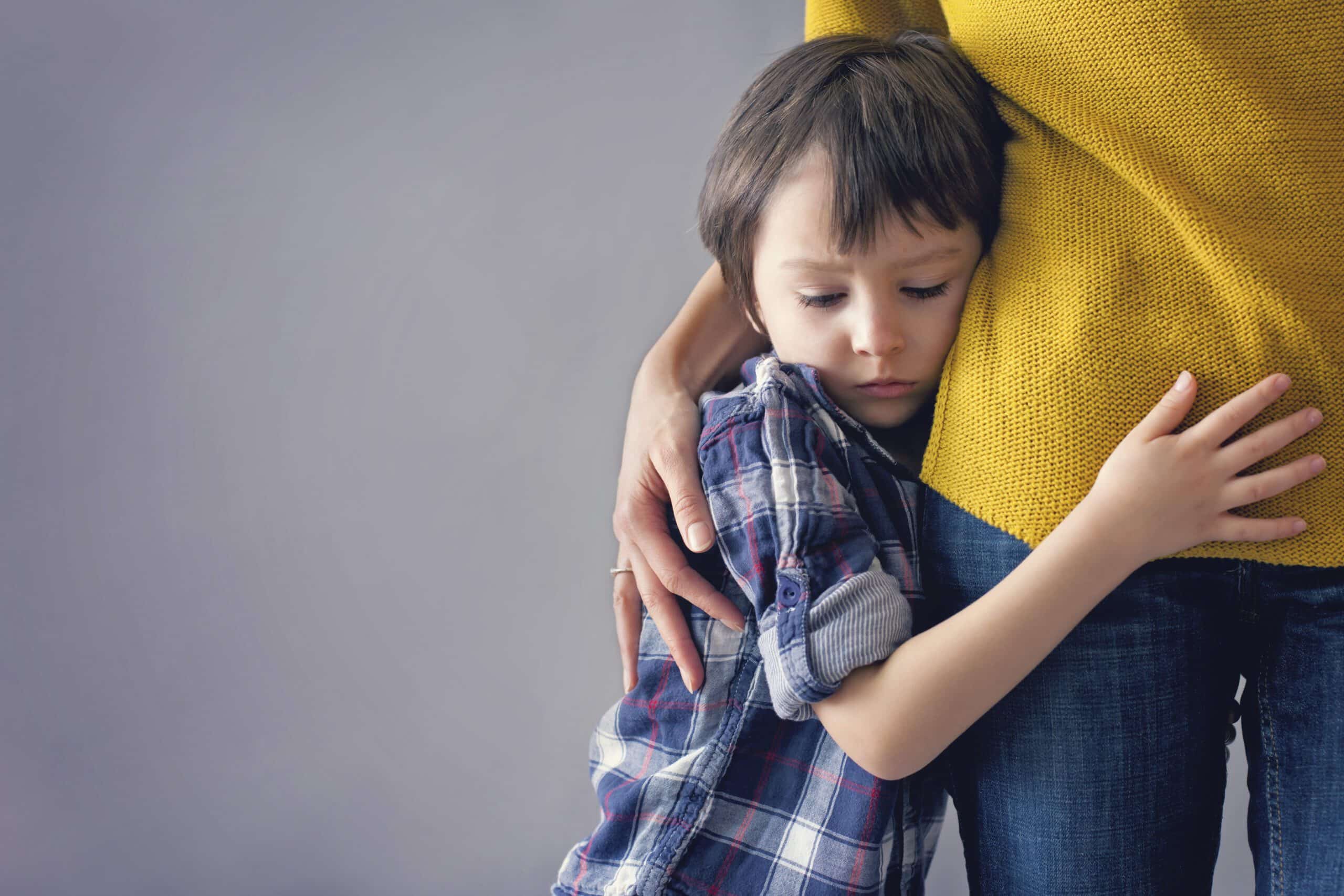
Sad little child, boy, hugging his mother at home, isolated image, copy space. Family concept
Its normal for children to have some anxieties–the world is big, and many experiences are new and untested. Many kids are afraid of the dark, worried about shots at the doctor’s office, have a fear of being left alone, or feel anxious about an upcoming test. But what do you do when your child’s anxieties seem to be taking over his or her entire sense of well-being?
Below are 6 suggestions to help you teach your children to manage the worries and concerns in their life.
1. Encourage them to view their worries and concerns as separate from themselves.
If children can separate themselves from their anxieties, it will be easier for them to understand and manage them. Help your child understand that worries and anxieties are normal–we all have them!–but that we get to decide which worries and concerns we are going to allow.
2. Explain that worries and concerns can have a very real impact on us physically as well as emotionally.
Ask them what happens to them physically when they are afraid. Where do they feel it? Sometimes people feel it as a sickening ball in their stomach. Other times people feel it as a tight knot in their chest, or as the sensation of being hot and sticky all over. See if your child can identify the physical response he or she has to different anxieties.
3. Help them develop strategies for making those worries and concerns go away.
One way to do this is to help them logically reason their way through worries. Help them practice reminding themselves about the truth and perspective of their concerns: Yes, it hurts to get a shot. But it only hurts for a minute, and you have had shots before.
Another way to manage the worry is to set aside “worry time.” Tell them they can think about their overwhelming concerns and fears for 15 minutes a day, but as soon as that time is up, they aren’t allowed to think about those worries again until tomorrow.
Third–and this works for all of us!–we can help them learn to talk back to their worries. Tell your child that when those thoughts come into our minds, we can counter them with specific comments aimed at getting the thoughts to back down: “That’s not true!” “Leave me alone.” “I’m not going to listen to you.” “Stop.”
4. Make sure they are getting 30 minutes of exercise a day.
Exercise helps with anxiety, because it triggers our bodies to release hormones called endorphins which help up to manage stress.
5. Teach them how to relax.
Unfortunately, the life of a typical child these days is fast-paced and high-stressed. And teaching relaxation can be a challenge for parents, because many of us struggle to do it ourselves! But anxious children need it. Relaxation has to be a priority for them–just like sleep, eating, and school work. Encourage your child to power down electronics and lay outside in the quiet for thirty minutes. You might buy a relaxation CD that he or she can listen to each night before they go to bed. And make time to read to them each day–regardless of how old they are!
6. Only expose them to age appropriate media.
This is one of the most powerful ways we as parents can help our children feel safe and secure rather than anxious. Children who are exposed to violence or violent images at a young age will naturally be more anxious. If they are exposed to adult content media–including current news events–before they are mature enough to process it all, it could not only create confusion and uncertainty, but that confusion and uncertainty could lead to problematic anxiety that significantly impacts their emotional well-being.
Is your child anxious? What steps will you take to help him or her begin to overcome anxieties?






